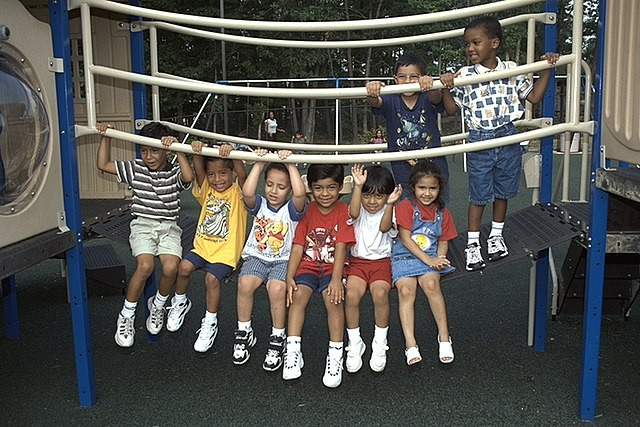
70,000 childcare facilities in the U.S. could close after Sept. 30, 2023, and despite only 30% of Hispanic parents using paid childcare, they will likely need to pay more.
Pandemic-related funding from The American Rescue Plan Act that passed in 2021 allocated $24 billion in child care stabilization grants, but that's all ending on Sept. 30, 2023.
For Hispanics in the U.S., according to a study from the Institute for Family Studies, they're least likely to pay for childcare and prefer to leave their children with people they know, but 30% of Hispanics still use childcare.
Additionally, 13% of daycare teachers and caregivers at center-based childcare facilities are Hispanic, and 15% of daycare teachers and caregivers at home-based childcare facilities are Hispanic, according to a Childcare and Early Education Policy and Research Analysis report.
The childcare grants allowed childcare providers to keep their doors open during the pandemic, and they also permitted childcare providers to pay their workers more and sustain their prices for customers. But cutting the childcare grant programs will likely result in childcare programs serving fewer children, higher childcare prices, or cut wages for childcare workers, who are already paid poverty-level wages, according to a statement from Sen. Patty Murray (D-Wash.)
Although many Hispanic parents don't use paid childcare, for those who do, the grants keeping childcare provider doors open are gone, which data suggest can create issues among the poorest Hispanic families who can't afford to keep a parent home when childcare gets too expensive. The U.S. Census Bureau released a report in 2020 stating that of the 60.6 million Hispanics in the U.S., 15.7% lived in poverty. That 15.7% is about 951,4200 Hispanic people who lived in poverty in 2019.
A study from the National Research Center on Hispanic Children and Families found that Hispanic parents working full-time and year-round are most likely to be low-income compared to 40% of Hispanic parents in this category. Comparatively, 32% of working Black parents and 13% of working white parents were low-income.
"Hispanic families may be disproportionately affected by child care affordability challenges given their high rates of parental employment (increasing their need for care) at relatively low wages (reducing their ability to purchase care)," said a study from the National Research Center on Hispanic Children and Families.
The effects of reduced childcare grants
The Century Foundation reported that approximately 3.2 million children could lose their childcare spots. Additionally, TCF estimated that 70,000 childcare programs will likely close. One-third of those are supported by American Rescue Plan stabilization funding.
One report from TCF estimates that 3,000 childcare centers will close in Pennsylvania alone. Democrat Sen. Patty Murray (D-Wash.), Sen. Bernie Sanders (I-Vt.), House Democratic Whip Katherine Clark (Mass. and other Democratic lawmakers introduced the "Child Care Stabilization Act" Wednesday, which would provide $16 billion in funding every year for the next five years to continue the Child Care Stabilization Grants program for child care providers, according to a statement from Murray's office.
"There was a childcare crisis even before the pandemic—and failing to extend these critical investments from the American Rescue Plan will push child care even further out of reach for millions of families and jeopardize our strong economic recovery," said Senator Murray in a statement from her office.
Although Democrats are pushing for the "Child Care Stabilization Act," with Republicans and Democrats in the House and Senate unable to agree on government funding, the legislation passing is unlikely. On top of childcare taking a hit, congresses inability to agree on government spending could result in a U.S. government shutdown on Oct. 1, 2023, if there is no agreement.
© 2025 Latin Times. All rights reserved. Do not reproduce without permission.





